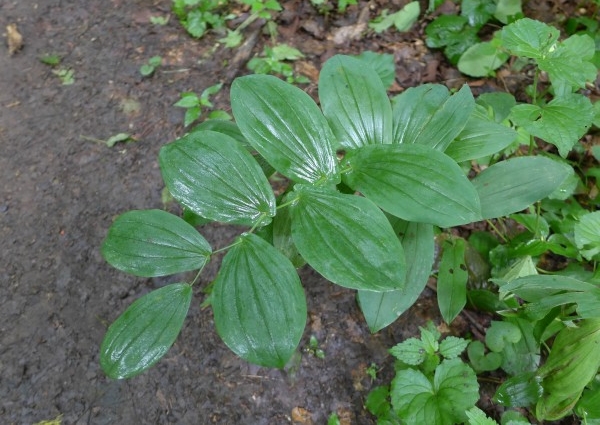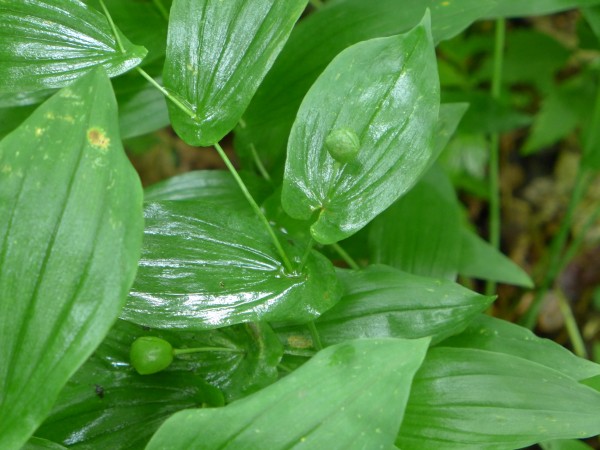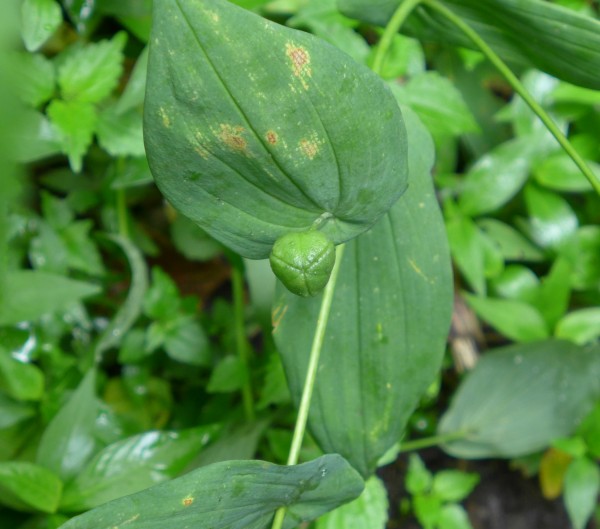
Today we’ll have a plant identification quiz. I have an answer but you may have a better one.
I found this plant on June 29 at Dead Man’s Hollow in Allegheny County. The leaves are so distinctive that its identity begs for some detective work. Here are the clues I gathered:
Leaves:
- alternate on the stem,
- edges are entire (not toothed),
- leaves are perfoliate. (The stem perforates the leaves, a very cool feature.)
- bottom leaves are larger than the violet leaves nearby.
The plant had no flowers and no buds. Instead it had developing fruits which gave me clues about the flowers. Here are two photos of the fruits.


The fruits are:
- on stems that sprout from perfoliate spots on the leaves
- three sided with a seam in the middle of each side. Does this mean the flower was three-petaled or six-petaled?
- still maturing? Or are they in their final form?
I looked up “six petals with alternate, entire leaves” in my Newcomb’s Wildflower Guide and found a familiar spring wildflower with perfoliate leaves.
However, I am not completely satisfied with my identification. I have never seen “my plant” arc horizontally like this when it’s blooming and the fruits in the illustration look different. Is my Newcomb’s Guide missing a species? Have I never noticed that the plant “lies down” in the summer? Are the fruits going to match the illustration when they mature in a few weeks?
So here’s the quiz: What plant is this?
Leave a comment with your answer. I’ll post my guess after I’ve heard from you.
UPDATE: It is large-flowered bellwort (Uvularia grandiflora). See the Comments for a link to the flowering version of this plant.
(photos by Kate St. John)
Is it Solomon’s Seal?
Uvularia grandiflora (large-flowered bellwort)! cool plant from a really neat place!
Thanks to Ephraim & Dianne we have a positive ID of this plant. Yes, it’s Large-flowered Bellwort (Uvularia grandiflora). When I see it in the spring it is not leaning over … but this one might be leaning to get more light at the edge of the trail. Here’s what it looks like when it blooms: http://www.birdsoutsidemywindow.org/2009/05/23/may-flowers-large-flowered-bellwort/
Large-flowered Bellwort, Uvularia grandiflora.
Yikes, no clue but I feel that I have seen this before. Where is Dead Man’s Hollow?
Looks like a false Solomon’s seal?
Looks a lot like Twisted Stalk or Rose Twisted Stalk (Rosy bells). Don’t know about
those perfoliate leaves though. Possible horticultural escapee?
Bellwort?
Thanks – We saw this on Mt Yamaska near St Pie Quebec two weeks ago. Now we know!
Looks like solomon’s seal. I have a green and white version of this plant in my shade garden.